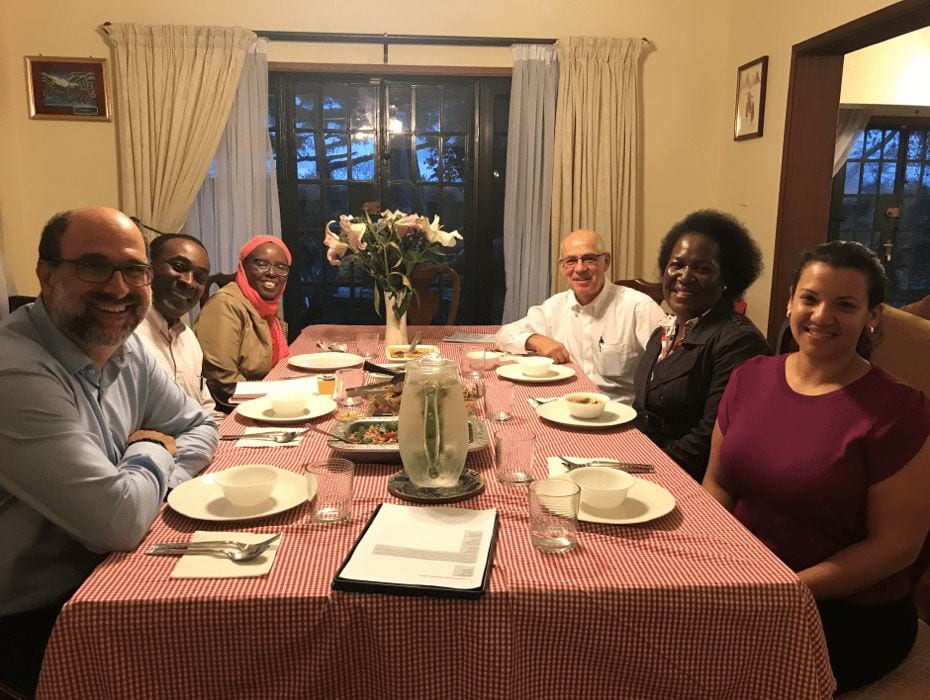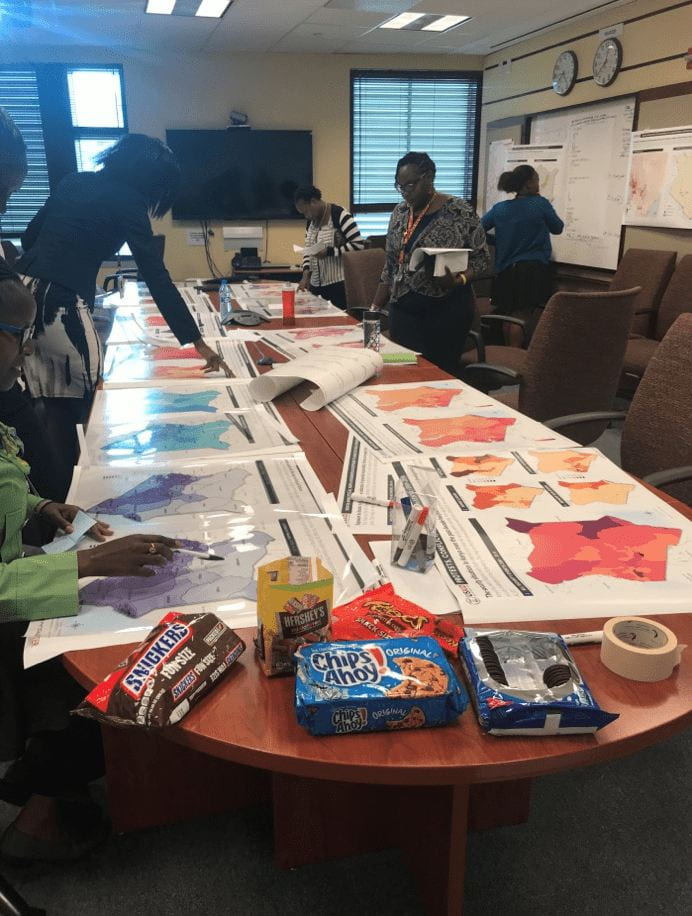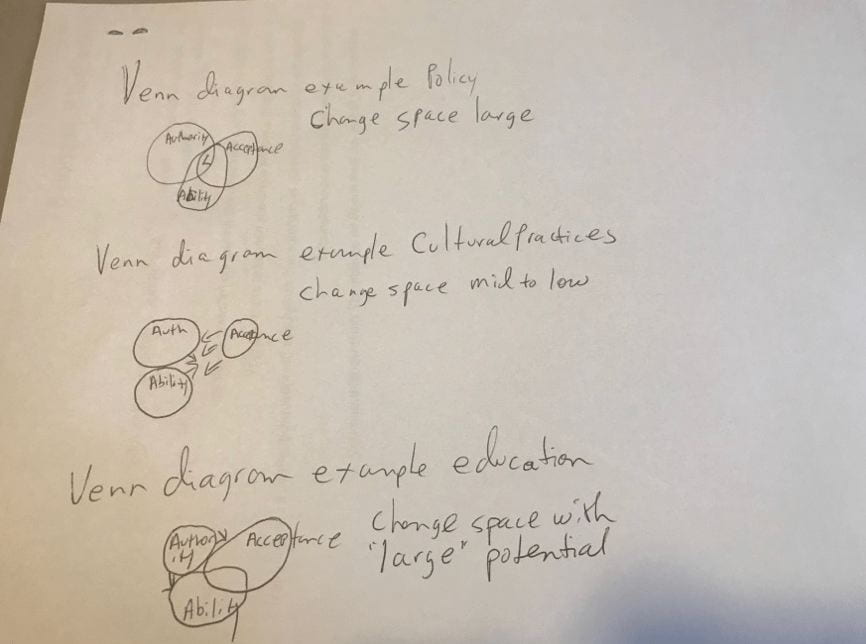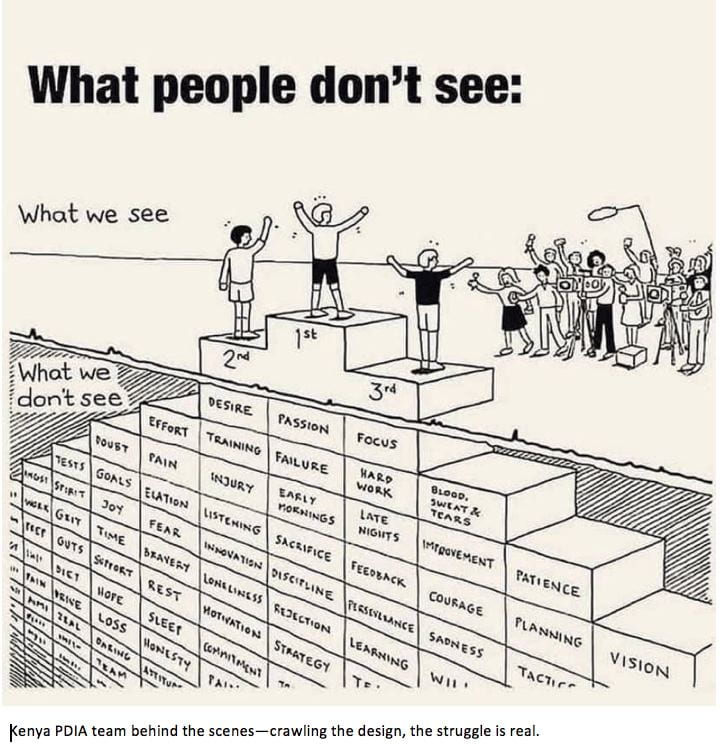Guest blog written by Jaynnie K Mulle, Meital Tzobotaro, Rosemary Okello-Orale, Stephen Brager, Warren Harrity.
This is a team of five development practitioners who work for USAID and Strathmore University in Kenya. They successfully completed the 15-week Practice of PDIA online course that ended in May 2019. This is their story.

The course provided a number of valuable tools, principles, and practices that are already being put to use. Additionally, a great takeaway is our team that was formed for this course, I am not sure how if it all we would have come together to work on something in a way that this course brought us together, but we are glad for this opportunity to create this team. Specific key takeaways include the emphasis on defining and deconstructing a problem rather that “applying solutions”; assessing the AAA’s and including the development of the authorization space as part of the activity; crawling the design; and appreciating that this practice is hard but rewarding. In many regards this course was a gift that enriched our thinking, refueled our enthusiasm, and helped us to look at our problem in a new and exciting way. Allow us to offer you a gift in return, if you’ve not done so already, read about one of the earliest PDIA practitioners in the “Autobiography of Benjamin Franklin.”
Other take-aways from the course include:
- Instead of adopting the solution that other people have to solve a problem, the course helped us to learn how to search for solutions to our problem,
- The 1804 metaphor of taking small steps to solve complex problems,
- The use of the fishbone to identify the cause and effects in problems and how they are interconnected. Most importantly how fishbone allows for prioritizing relevant cause so that the underlying root cause is addressed first,
- The importance of using iteration, and,
- How people are at the center of all PDIA elements

When we constructed our problem, we aimed at what would get people’s attention especially those in authority. Looking at our problem: “Effect Problem Average 9-year old girls in Kenya are trapped in a cycle of poverty” the following progress were made:
- We realized as a team that involving everyone from different backgrounds to discuss the problem was critical and this helped in bringing reform ideas.
- By deconstructing the problem we discovered may dimensions to our problem which we could not solve with just one solution. This made use re-look at the governance structures, the existing policies, identifying cultural practices, the inter-ministerial i.e. Education, Finance and Health approach to the problem, access to health and whether there are any data available on the subject matter.
- We were able to identify the key stakeholders, the primary authorizers and what we needed as a building the Triple ‘A’ in Kenya.
- Using experimental iteration we developed a plan focused on what each of us was doing and we designated timeframe.
- Some of the insights we learned from the the problem were: (i) The process enabled us to Identify ‘small bite’ tasks to start, with clear deadlines and expectations, and to reach out to get more information and even ask our authorizer to help, and clarify what is possible, as well as what is still uncertain.

We are embarking on initial steps to develop a 5 year $2 billion strategy in Kenya, and have already begun to use PDIA to examine a representative problem statement. While learning about and using the PDIA tools we have used several already, for example we’ve adopted the stakeholder analysis tool for an exercise to select representatives from across Kenya to take part in a consultative forum to participate in the co-creation of our strategy. Additional, several of the team formation exercises have been utilized. We are hoping that next week we’ll be able to engage a cross section of our staff in a fishbone diagram exercise. And most importantly we have crawled the design on several key issues of import for the more “wicked hard” sub-causes of our problem. Finally, we would like to do a summarized presentation to our broader team and other colleagues to share our PDIA experience with them—as the strategy takes shape activities to achieve the goals of our strategy will be designed and it is our greatest hope that a team or two will be formed to take the PDIA course in September.

To learn more, visit our website or download the PDIAtoolkit (available in English and Spanish) or listen to our podcast.